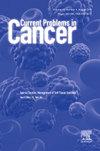Four versus six cycles of platinum-based chemotherapy for advanced Urothelial carcinoma in the era of immune checkpoint inhibitors: A retrospective cohort study (FOCUS, KCSG-GU23-08)
IF 2.3
4区 医学
Q3 ONCOLOGY
引用次数: 0
Abstract
Introduction
This study aimed to assess the survival outcomes of four versus six cycles of first-line platinum-based chemotherapy (PBCT) in the era of immune checkpoint inhibitor (ICI) for patients with advanced urothelial carcinoma (UC).
Patients and Methods
Patients with histologically confirmed advanced UC were allocated to either the 4-cycle PBCT (C4) or 6-cycle PBCT (C6) groups and retrospectively analyzed. After the planned cycles, active surveillance was conducted every 6–8 weeks, followed by second-line treatments, including ICIs, upon progression. The primary endpoint was overall survival (OS).
Results
Of the 161 patients initiated with PBCT between September 2016 and February 2023, 27 were deemed ineligible, leaving 134 patients for analysis (C4, n = 58; C6, n = 77). Baseline characteristics, including cisplatin eligibility, were similar between the groups. With a median follow-up of 23.7 months (95 % confidence interval (CI), 20.3–27.1), no significant difference was observed in OS between the C6 and C4 groups (18.7 months vs. 17.0 months; hazard ratio (HR) 1.27, P = 0.343). In multivariate analysis adjusted for sex, initial presentation, metastatic lesion, and ECOG PS, no significant difference was observed between the C6 and C4 groups (HR 1.29, 95 % CI, 0.78–2.14, P = 0.315).
Conclusions
This study showed that four cycles of PBCT do not differ from six cycles regarding OS.
免疫检查点抑制剂时代晚期尿路上皮癌的四周期与六周期铂类化疗:一项回顾性队列研究(FOCUS,KCSG-GU23-08)。
研究简介本研究旨在评估在免疫检查点抑制剂(ICI)时代,晚期尿路上皮癌(UC)患者一线铂类化疗(PBCT)4个周期与6个周期的生存结果:将组织学确诊的晚期尿路上皮癌患者分配到4周期PBCT(C4)组或6周期PBCT(C6)组,并进行回顾性分析。计划周期结束后,每6-8周进行一次主动监测,病情进展后进行二线治疗,包括ICIs。主要终点是总生存期(OS):在2016年9月至2023年2月期间开始接受PBCT治疗的161名患者中,有27人被认为不符合条件,剩下134名患者进行分析(C4,n = 58;C6,n = 77)。两组患者的基线特征(包括顺铂资格)相似。中位随访时间为 23.7 个月(95% 置信区间 (CI),20.3-27.1),C6 组和 C4 组的 OS 无明显差异(18.7 个月 vs. 17.0 个月;危险比 (HR) 1.27,P = 0.343)。在调整了性别、初始表现、转移病灶和ECOG PS的多变量分析中,C6组和C4组之间未观察到明显差异(HR 1.29,95 % CI,0.78-2.14,P = 0.315):本研究表明,在OS方面,四个周期的PBCT与六个周期的PBCT没有区别。
本文章由计算机程序翻译,如有差异,请以英文原文为准。
求助全文
约1分钟内获得全文
求助全文
来源期刊

Current Problems in Cancer
医学-肿瘤学
CiteScore
5.10
自引率
0.00%
发文量
71
审稿时长
15 days
期刊介绍:
Current Problems in Cancer seeks to promote and disseminate innovative, transformative, and impactful data on patient-oriented cancer research and clinical care. Specifically, the journal''s scope is focused on reporting the results of well-designed cancer studies that influence/alter practice or identify new directions in clinical cancer research. These studies can include novel therapeutic approaches, new strategies for early diagnosis, cancer clinical trials, and supportive care, among others. Papers that focus solely on laboratory-based or basic science research are discouraged. The journal''s format also allows, on occasion, for a multi-faceted overview of a single topic via a curated selection of review articles, while also offering articles that present dynamic material that influences the oncology field.
 求助内容:
求助内容: 应助结果提醒方式:
应助结果提醒方式:


